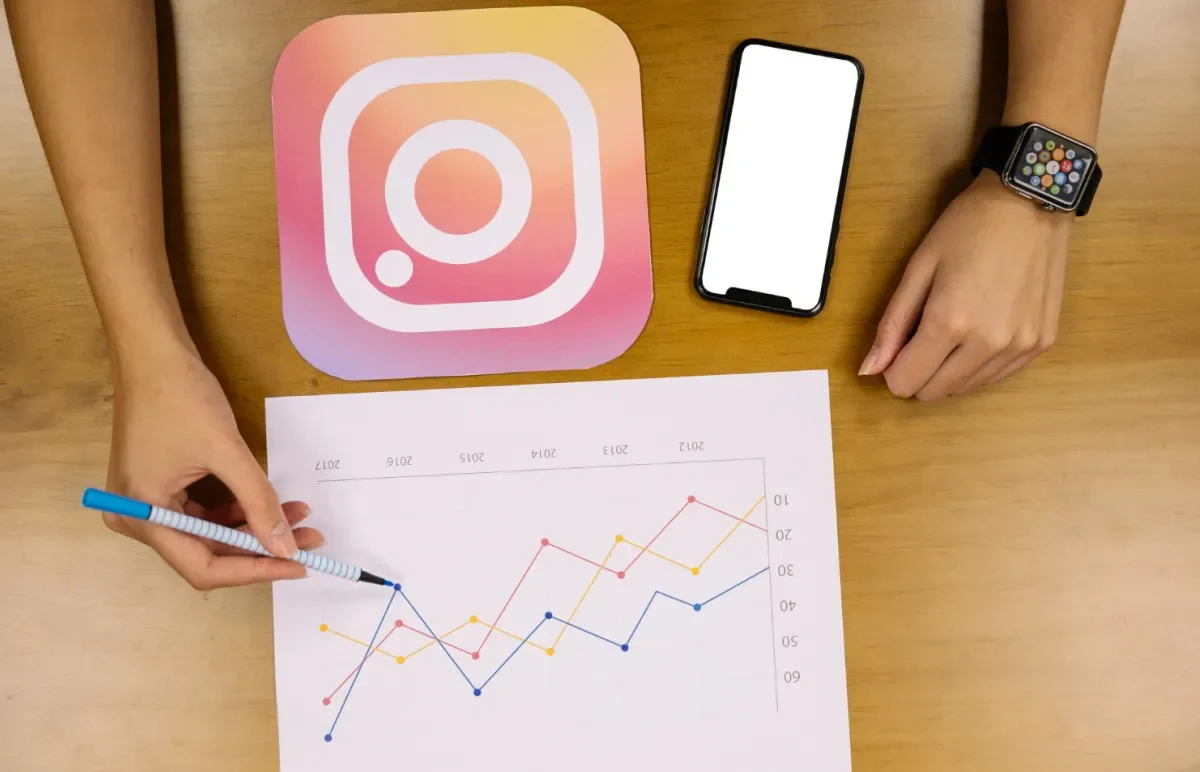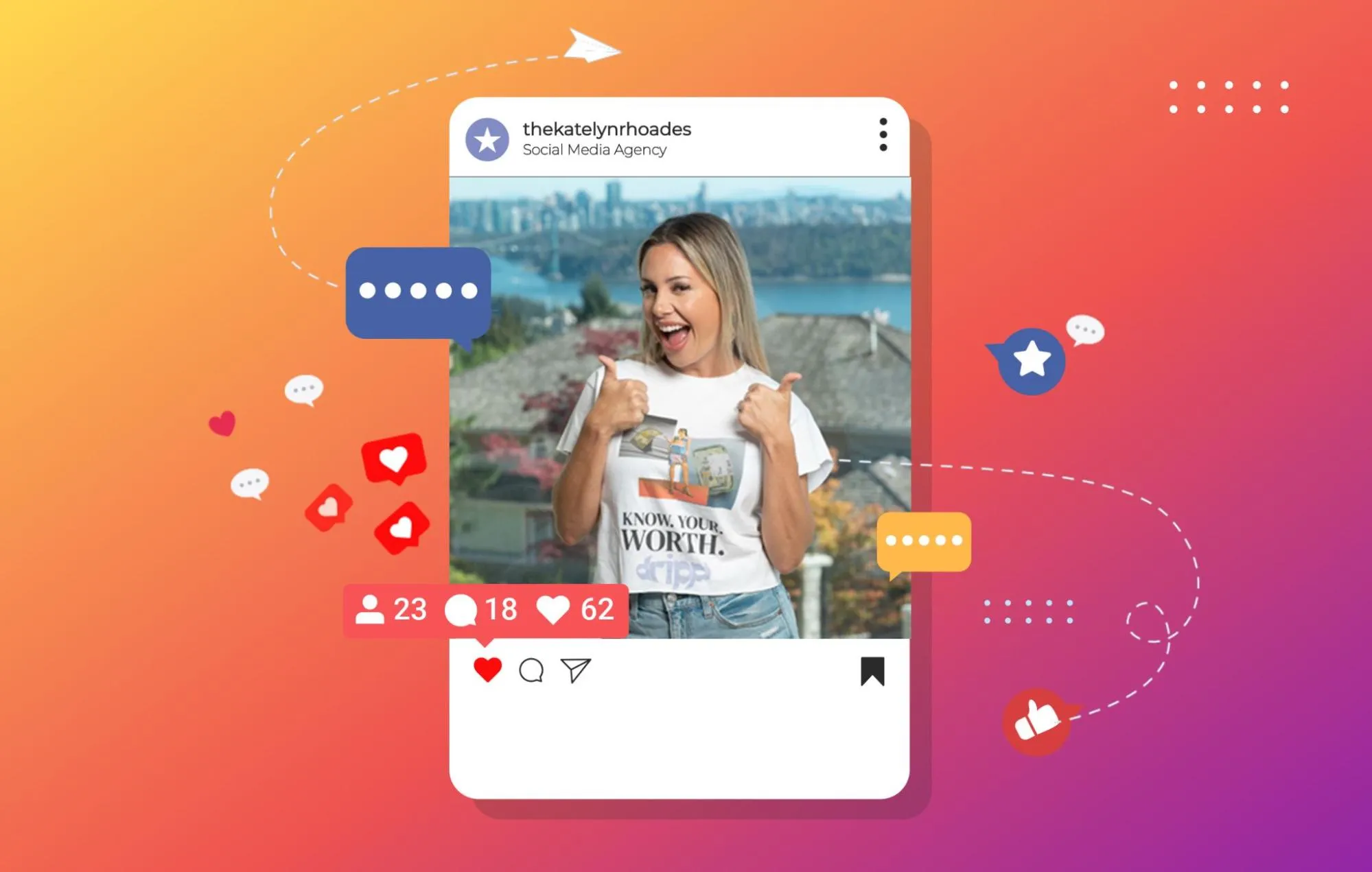Let’s be real—Instagram isn’t the wide-open playground it used to be. Feeds are cluttered, trends are recycled overnight, and brands are fighting for the same few seconds of attention. Your content may be solid, but guess what? So is everyone else’s.
Here’s the kicker: most social media managers aren’t just competing with brands. They’re competing with influencers, creators, meme pages, and even trending audios. And without knowing what those competitors are doing right (or wrong), it’s nearly impossible to stay ahead.
That’s where a proper Instagram competitor analysis comes in—not a once-a-year audit, but a monthly edge.
This blog gives you a 4-stage system to help you find who’s pulling your audience, what they’re doing that works, and how to respond strategically without copying a single post.
Why is Instagram Competitor Analysis Not Optional in 2025?
Instagram isn’t what it was even a year ago, and pretending otherwise is a fast track to falling behind. Let’s break down why tracking competitors isn’t just a smart move, but a necessary one in 2025.
What’s changed on Instagram lately?
To start, Instagram’s algorithm has gotten way more selective. It’s no longer about who posts first—it’s about who posts what users are most likely to engage with. “Suggested posts” now dominate the feed, pushing your brand content down unless it’s algorithmically competitive. You’re not just fighting your rivals, you’re competing with memes, influencers, and trending audio.
Why is your “great content” not enough anymore?
And even if your content looks polished, that’s no longer a differentiator. Content sameness is real. Everyone’s using the same audios, formats, and hook lines—especially in B2C and creator-heavy niches. The result? Your audience is tuning out. To stay relevant, you need to identify what’s overdone—and where fresh opportunities live.
The brands that track competitors? They grow faster.
Here’s where smart marketers separate from the rest. Brands that actively monitor competitors aren’t copying, they’re out-positioning. They learn from what’s performing, what’s not, and which gaps they can fill. This kind of visibility helps you test smarter, iterate faster, and win attention without guessing.
TL;DR
- Instagram now shows more suggested content, reducing organic reach.
- Content fatigue is real; users disengage from sameness.
- Competitor tracking gives early insight into trends and engagement patterns.
So now you know why competitor analysis is a must in 2025. But the next big question is: who exactly should you be analyzing? Spoiler: It’s not just the brand selling the same thing as you.
Analyzing Competitors: Who’s Worth Your Attention?
It’s tempting to just watch the brand selling the same thing as you. But here’s the twist: your real competition isn’t always obvious. In today’s economy, anyone who consistently shows up in your audience’s feed is a competitor, including meme pages, skincare creators, or even newsletters that repurpose viral reels. These accounts don’t sell what you sell, but they do steal the scroll time your brand needs to thrive.
Let’s zoom out.
Don’t Track Competitors: Track Who’s Winning Your Audience’s Time
Your ideal customer doesn’t only follow “businesses like yours.” They follow lifestyle influencers, niche creators, podcasts, coaches, meme accounts—you name it. That means your competitors aren’t just in your industry. They’re in your audience’s feed. And with Instagram’s global ad audience size in 2025, reaching over 1.84 billion users, the competition for attention is broader–and tougher–than ever. ,
Watch for Positioning Collisions: They Matter More than You Think
Ever feel like another brand is “saying what you wanted to say”? That’s a positioning overlap. Maybe you both talk about sustainability, hustle culture, or minimalist living, even if your products are totally different. Spotting these overlaps helps you avoid blending in and gives you room to reposition.
Find the Sneaky Attention Siphons in Your Niche
We call them adjacent siphons. These aren’t direct competitors—they’re creators or brands nearby who steal your engagement without selling what you sell. For example, a nutrition coach might not compete with your fitness app—but if they dominate reels on wellness, your posts get buried.
Group Competitors like a Strategist
Tracking 25 random accounts and calling it “analysis” won’t cut it. You need a system. One that helps you stay focused on insights that actually move the needle.
This 3-tier competitor tracking framework gives you clarity on who to track, what to watch, and why it’s worth your time. Think of it as your shortcut to faster strategy, smarter benchmarks, and scroll-stopping content ideas.
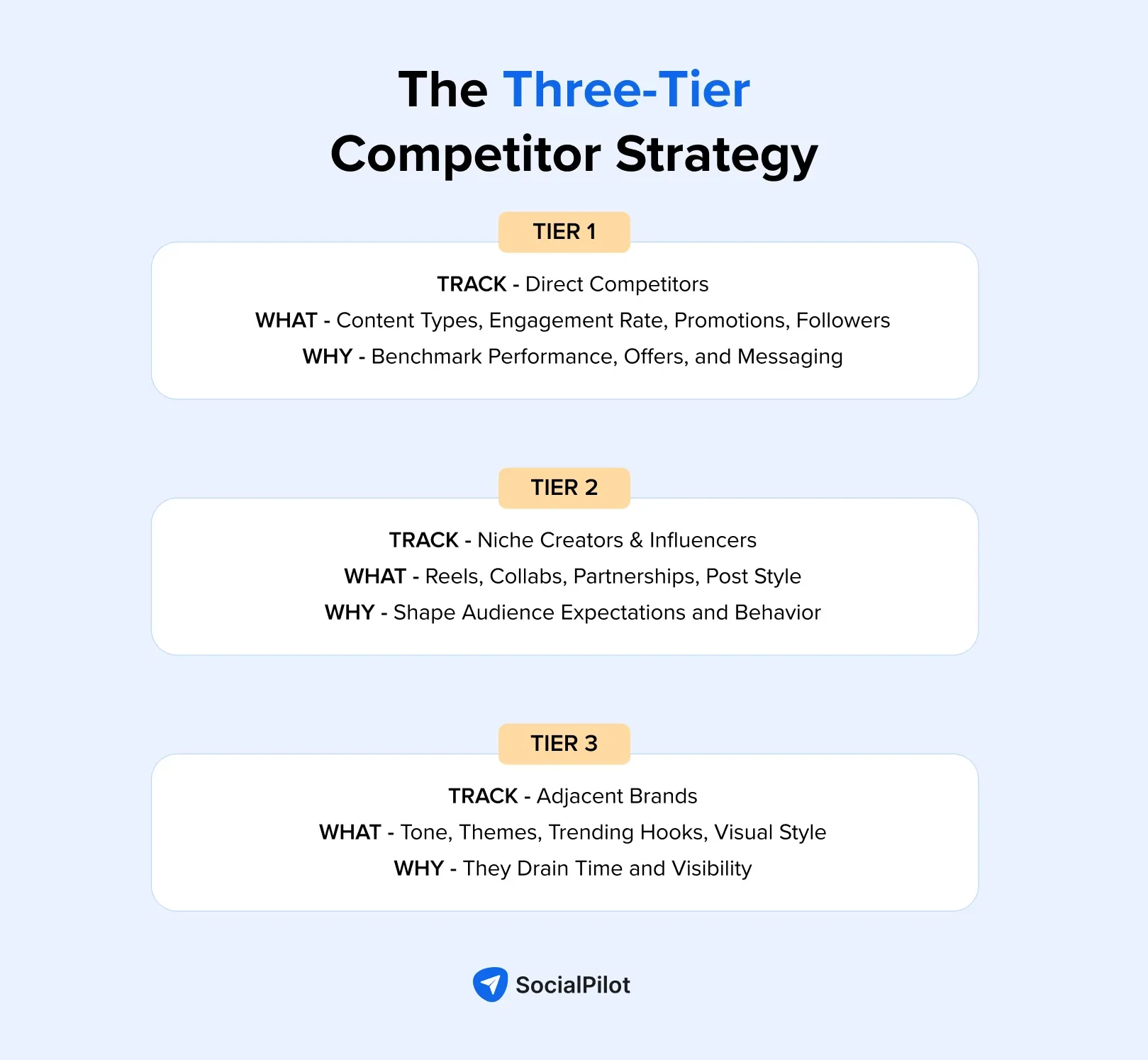
Some Real-World Scenarios to Look at:
Imagine you’re the social media lead at SocialPilot, and you’re tasked with scaling Instagram visibility this quarter. Naturally, you’d start with who looks most like you—but the story doesn’t end there.
- Tier 1: Direct Competitors:
You start tracking Buffer’s Instagram handle, another major player in the scheduling and social management space. Their Instagram features product updates, carousel tips for creators, and Reels that simplify marketing jargon.
You notice they’re pushing thought-leader content and tapping carousel storytelling to build authority. They’re also teasing features before release—driving both engagement and product curiosity.
This is your Tier 1. You’re watching what they post, how frequently, and what kind of community interaction they spark. Why? Because Buffer speaks to the same customer you do—your wins and losses often mirror each other.
- Tier 2: Niche Influencers & Creators
While studying your shared audience, you find many of them engaging with thesocialmedia.ceo Instagram account, a niche content coach who teaches small biz owners and content creators how to grow online with short-form tips and candid strategy drops.
She’s not a competitor but she’s shaping how your audience thinks about content cadence, captions, and platform behavior.
That makes her Tier 2. Creators like her set the tone for what your ICP expects in their feed and if your brand content doesn’t match that energy or format, you’re instantly filtered out.
- Tier 3: Adjacent Brands
A few more clicks and you spot followers engaging with shopify, canva, and mondaydotcom—platforms that don’t directly compete with SocialPilot, but dominate your audience’s mindshare.
They’re not just sharing features—they’re storytelling through trends, data drops, and Reels that actually teach.
That’s Tier 3: not competitors, but attention magnets. And they’re shaping the scroll expectations that your posts live (or die) by.
And once you’ve nailed who to watch, focus on learning how to create stronger Instagram content that holds attention because standing out starts with a better strategy, not just better visuals.
Now that you’ve nailed who to track, let’s talk about what to actually look for. Spoiler: It’s way more than likes and follower counts.
What Winning Brands Track When Analyzing Their Competitors?
It’s 2025, and the metrics that mattered in 2019 just don’t cut it anymore. Winning brands aren’t obsessing over surface-level engagement: they’re tracking what actually drives visibility, saves, and conversions. Here’s your new checklist:
1. Content Theme Saturation
It’s not just about overposting—it’s about over-repeating. When every brand in your niche shares the same productivity tips, client wins, or self-care posts in the same style, your message blends into the noise. Even great content gets ignored when it looks and sounds like everything else in the feed.
Why “Same Old, Same Old” Kills Performance?
When your content feels predictable—even if it’s “high quality”—it loses its edge. Instagram’s algorithm favors fresh engagement, so repeating the same message as everyone else can push your posts lower in the feed. That’s a hit to both attention and reach.
How to Stand Out in a Saturated Theme?
- Audit your content pillars monthly: Use a content mapping tool or spreadsheet to log your last 30 posts. How many fall under the same angle or theme?
- Analyze niche saturation: Track 5-7 competitors and note their most repeated themes. If everyone’s riding “Monday Motivation,” that’s a clue to shift.
- Flip the narrative: If the dominant message is “Top 5 Productivity Tips,” try “3 Productivity Hacks That Failed Us” or “Why I Gave Up Morning Routines.”
- Use emotion reversal: Instead of aspirational captions, try real-talk vulnerability. E.g., “Why did this launch almost break our team?”
- Experiment with “anti-trend” content: Create posts that deliberately subvert the expected: swipe files that don’t “win,” failed results, or raw behind-the-scenes.
For Example:
Fitness creator Ashton Hall went viral in 2025 by flipping the wellness script. His Reel showed a chaotic, unfiltered morning routine like ice water face dunks, banana peels, and pure relatability.
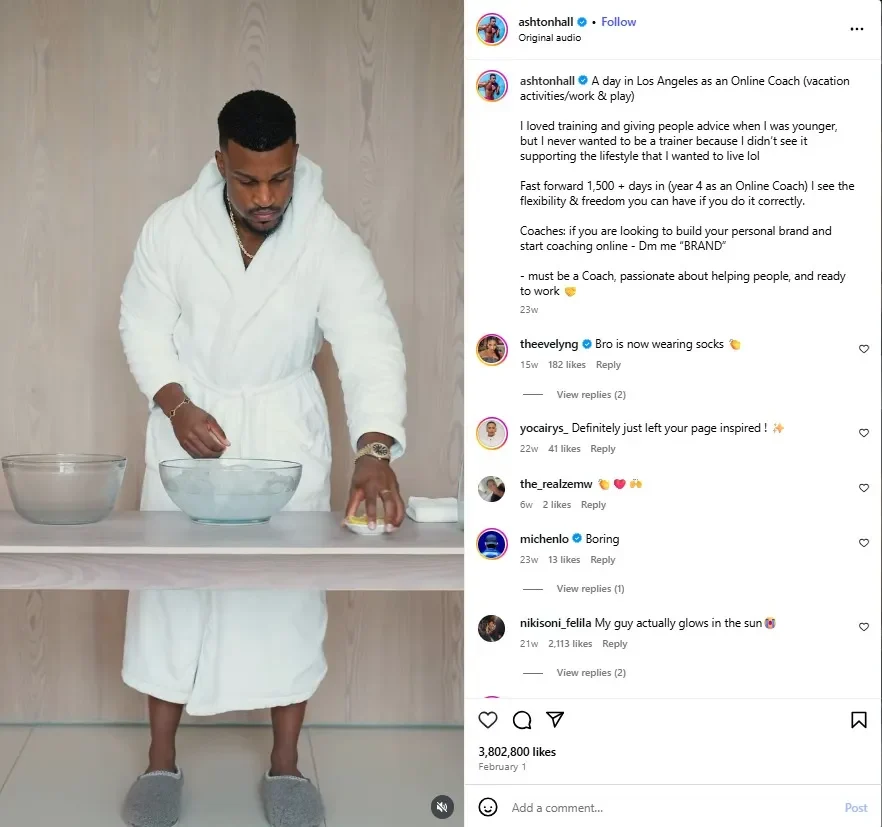
2. Format Dominance
Format dominance happens when one content type—Reels, carousels, static posts, or collabs—consistently outperforms the rest in your niche. It’s not just a trend; it’s how your audience prefers to engage.
If you’re still posting carousels while your niche has gone Reel-first, you’re not late, you’re invisible.
Why “One Format Fits All” Is Holding You Back?
Instagram doesn’t weigh all formats equally. Reels boost discovery, carousels drive saves, and collabs supercharge reach. Clinging to outdated formats drains your visibility—even great content can flop if it doesn’t match current feed behavior.
How to Win the Format War in 2025?
- Audit your past 30 posts: Track performance by format – look at reach, saves, shares, and comments.
- Track your competitors: What formats dominate their top 10 performing posts? Screenshot, tag, and categorize.
- Map format to funnel stage: Use Reels for discovery, carousels for education, static posts for brand tone, and collabs for reach spikes.
If Reels are your growth engine, this Instagram Reels marketing guide will help you fine-tune your approach with proven tips and content ideas.
- Repurpose smartly: Turn a carousel into a talking-head Reel, or a collaborative post into a “duet” or remix. Maximize reach without reinventing content.
For Example:
U.S. brand Lululemon pivoted from static posts to Reels and creator collabs, filling their feed with bite-sized videos from trainers, athletes, and lifestyle creators making their timeline more dynamic and interactive.
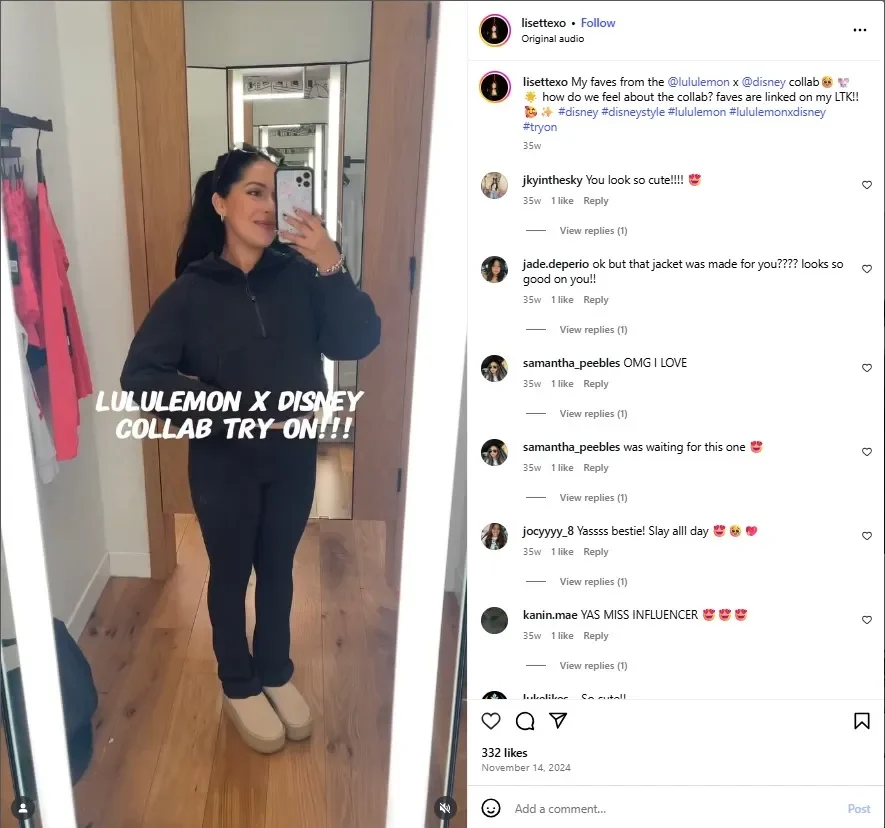
3. Creator Collab Signals
Not all influencer partnerships are loud or labeled “paid.” Sometimes, it’s a casual mention in a story, a shared Reel, or a friendly tag in a post. These micro-signals can reveal whether your competitors are tapping into paid influencer campaigns, long-term creator relationships, or organic brand love.
You’re not just watching who they work with: you’re decoding how.
Why Can’t These Signals Be Ignored?
Creator collabs reveal how much your competitor invests and whether they’re going for reach or authenticity. A sudden engagement spike with untagged creators? Likely a smart, organic shoutout that blends in naturally.
And that gives you something more valuable than just envy: INSIGHT.
How to Spot and Use Collab Signals to Your Advantage?
- Track tag frequency: Who’s tagging them repeatedly? Creators or fans?
- Check caption language: Is it casual or campaign-like? Look for clues like “I’ve been loving this brand lately…” versus “#ad”.
- Scan their grid vs. stories: Brands often test paid collabs via Stories first before going full feed.
- Use tools to detect creator overlap: If the same influencer appears across multiple competitor pages, there’s likely a paid play.
- Build your own hybrid collab strategy: Mix paid and organic to keep it both strategic and authentic. For actionable tactics and examples, explore this Instagram influencer marketing guide tailored to brands navigating 2025’s creator economy.
For Example:
U.S. beauty brand ColourPop nailed influencer collabs by partnering with micro-influencers for casual Reels and Stories with no flashy #ad tags, just real reactions that felt organic and relatable.
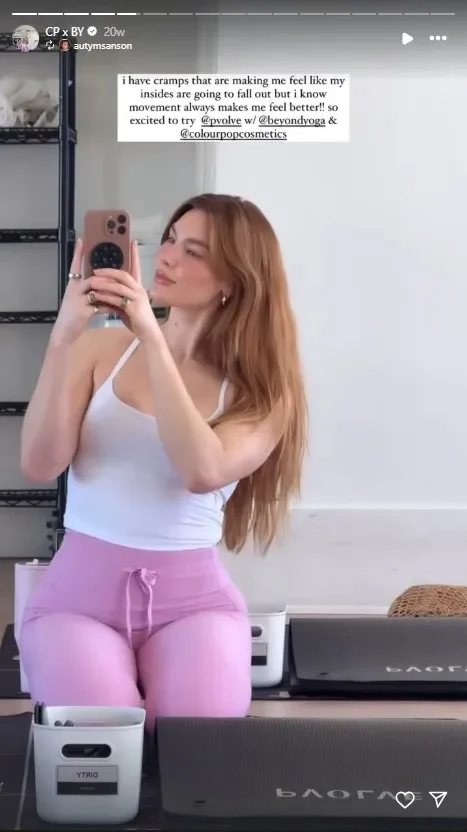
4. Posting Frequency vs Engagement Decay
Posting frequency is how often you share content. Engagement decay is the drop-off in likes, comments, or saves with each post if your audience feels overwhelmed or underwhelmed.
Too many posts too close together? Your engagement per post tanks. Too few? You fall off your followers’ radar. The sweet spot is tricky—but crucial.
Why Isn’t More Always More?
Instagram’s feed now rewards meaningful interactions over sheer output. If your last 5 posts got fewer likes and comments despite consistency, it might be because your audience is fatigued or confused.
High-frequency accounts risk getting muted or ignored. Low-frequency accounts struggle to stay top of mind. The algorithm notices both.
How to Find the Right Rhythm?
- Benchmark your industry: Are your top competitors posting 3x a week or daily? Match it, then optimize.
- Check engagement patterns: Use analytics to spot decay trends. If engagement drops after 3 consecutive posts, space them out.
- Create a “buffer day” strategy: Post on Mon-Wed-Fri, then track if weekends help with recovery.
- Repurpose, don’t repost: Spread one big idea across carousel, reel, and story formats instead of three feed posts.
- Use auto-schedulers: Many tools in the market will help maintain consistency without flooding your feed.
Timing matters just as much as frequency. Here’s a breakdown of the best times to post on Instagram to help maximize reach and reduce engagement drop-offs.
Consistency is powerful—but only when it’s strategic.
With SocialPilot’s Instagram Scheduler, you’re not just saving time—you’re optimizing every post for better results.
Here’s how it sharpens your Instagram rhythm:
- Schedule posts, Reels, and Stories that hit when your audience is most active.
- Auto-publish your top-performing formats with zero manual effort.
- Expand your reach using location tagging and targeted mentions.
- Boost interactions by auto-adding your first comment (with hashtags, CTAs, or follow-ups).
- Create thumb-stopping content with help from AI Pilot—your AI-powered content co-creator.
- Avoid publishing mistakes with team workflows, approvals, and brand guardrails.
- Track campaign performance accurately using built-in Google Analytics support.
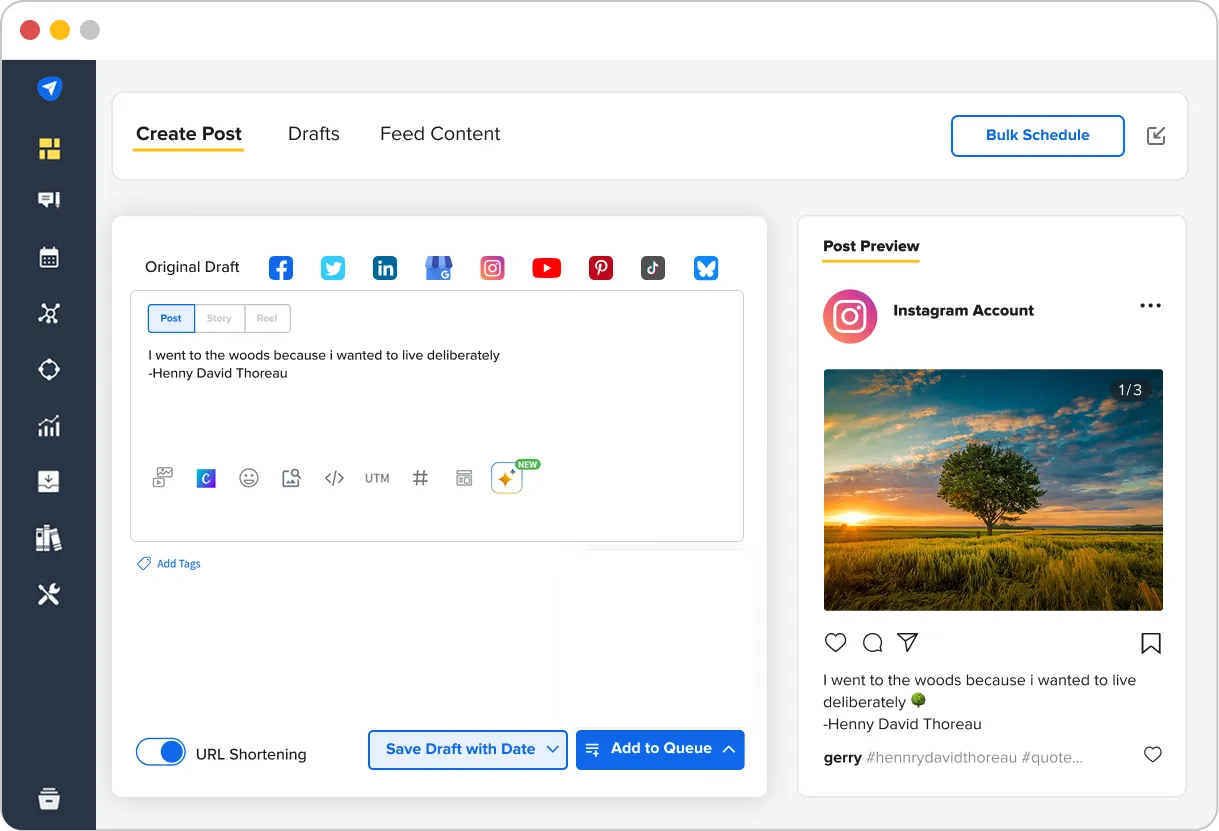
For Example:
Chipotle nailed its content rhythm with a smart mix—Reels, Stories, and user-generated posts. Memes on Mondays, creator duets midweek, and behind-the-scenes clips by Friday kept their feed fresh and engaging.
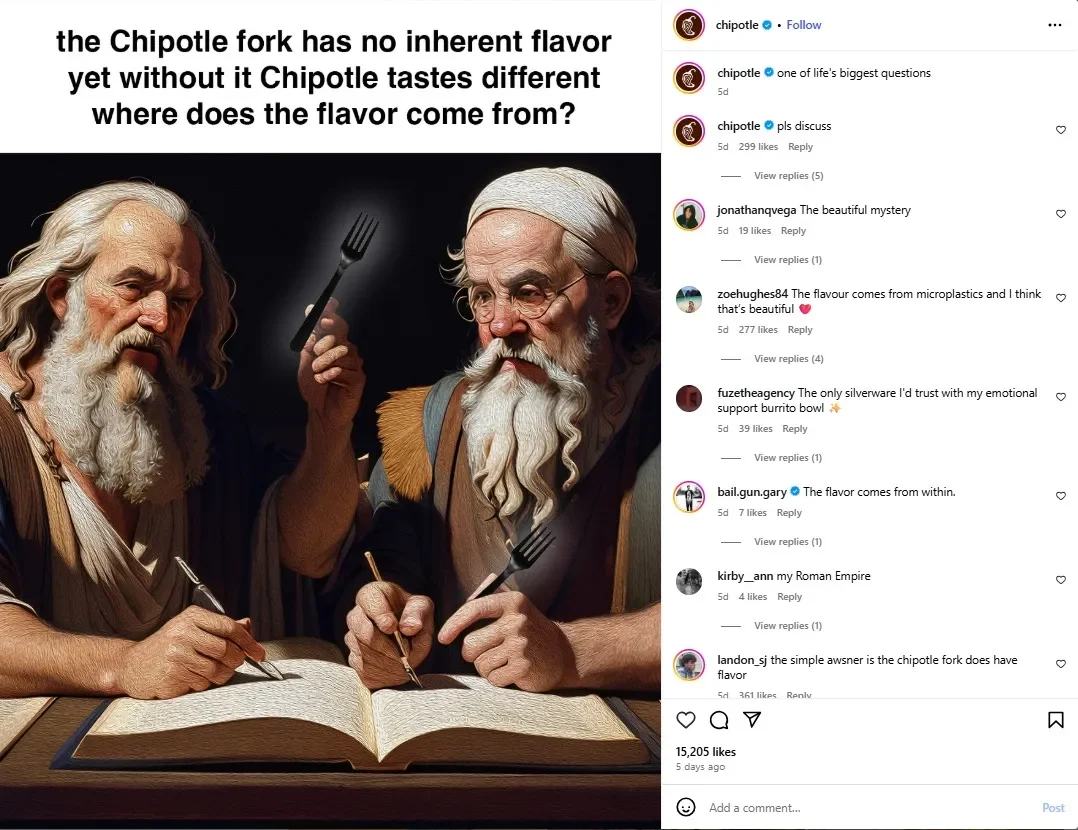
For Content Strategist – Keeping a consistent publishing rhythm without burning out your team or audience takes planning. Following a dedicated social media scheduling guide helps streamline this process for long-term growth.
Hashtags should boost reach—not bury it. Repeating the same 15–30 hashtags on every post signals stale behavior to Instagram’s algorithm, leading to soft visibility drops. Even worse? Your content gets lost in overcrowded hashtag pools. hashtag feeds, making them easy to ignore (even if your content is strong).
Why Repetitive Hashtags Can Kill Your Visibility?
Instagram prioritizes content that drives fresh interactions. Repeating the same hashtags can signal low effort or automation—causing your posts to be buried on explore or hashtag pages. The result? Lower engagement and slower growth, especially for smaller accounts.
How to Break the Hashtag Loop?
- Audit Your Hashtag Pool Monthly: Create 3–4 rotating hashtag groups based on themes, formats, and audience. Track performance over time.
- Split-Test Themes: Compare post reach when using niche-specific hashtags vs. broader trending ones. Avoid always chasing the same vanity tags.
- Try Posting with No Hashtags: Our Instagram trends report shows that posts without hashtags got 23% more reach than those with overloaded tags. Try skipping hashtags on high-impact content and let the post speak for itself.
- Refresh Your Strategy with Tools: Use tools like Flick or Hashtagify to identify overused or banned hashtags in your industry.
- Include Branded and Conversational Tags: Branded or community-led hashtags often drive better engagement than high-volume generic ones like #MotivationMonday.
For Example:
Underwear brand Parade shifted away from stacking branded hashtags like #ParadePartner. Instead, they now use zero or one hashtag, focusing on bold first lines, emotional captions, and creator collabs to drive engagement.
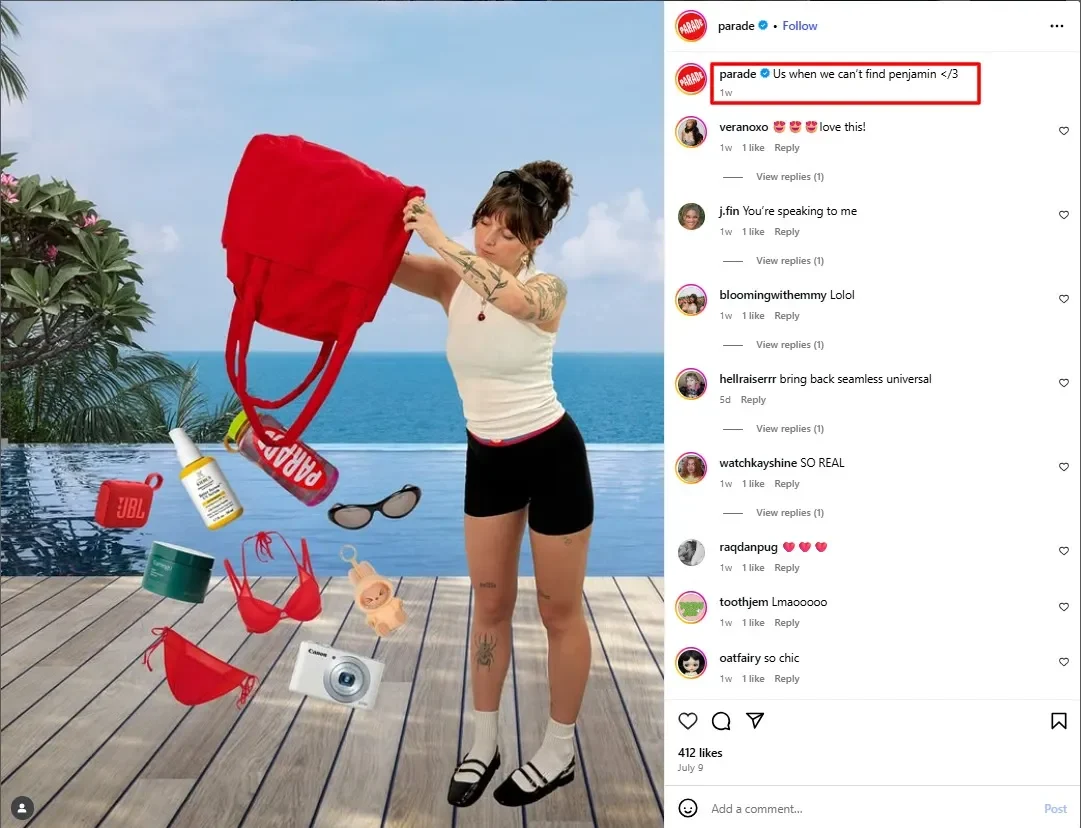
6. Engagement Skew
Not all engagement is created equal. Engagement skew happens when a brand’s posts rack up likes but struggle with comments, saves, or shares.
Instagram values meaningful interactions like saves, shares, DMs, and thoughtful comments far more than passive likes. So if a competitor’s posts show high likes but low real engagement, it likely signals shallow reach, not lasting impact.
Why Your Engagement Could Be a Vanity Trap?
If you only benchmark likes, you’ll end up chasing empty wins. True performance lives in how many people saved your carousel for later, how many shared your Reel, or who replied to your caption.
Tracking engagement skew helps you:
- Spot content that’s liked but not loved
- Avoid mistaking hype for loyalty
- Build strategies based on actual community behavior
How to Balance the Engagement Scales?
- Audit recent posts by metric type: Go beyond vanity likes—check how many saves, shares, and comments you’re earning.
- Prompt the right action: If you want to save, offer tips or resources. For shares, create relatable, high-emotion content. For comments, ask bold or surprising questions.
- Repurpose high-save posts: If a post gets lots of saves but few likes, expand it into a carousel or short-form video. Double down on what brings real value.
- Track sentiment in comments: Not just volume—are people tagging friends, asking questions, or dropping emojis? That’s engagement gold.
- A/B test CTAs: Subtly tweak your call-to-actions—“save this for later” vs. “send this to a teammate”—to see what moves the needle.
Need help improving those deeper interactions? Our guide on how to increase engagement on Instagram breaks down actionable tactics that move beyond likes.
For Example:
Duolingo goes beyond likes. Their owl mascot sparks comment threads, cliffhanger Reels drive shares, and meme-style language tips earn saves, turning every post into an engagement engine.
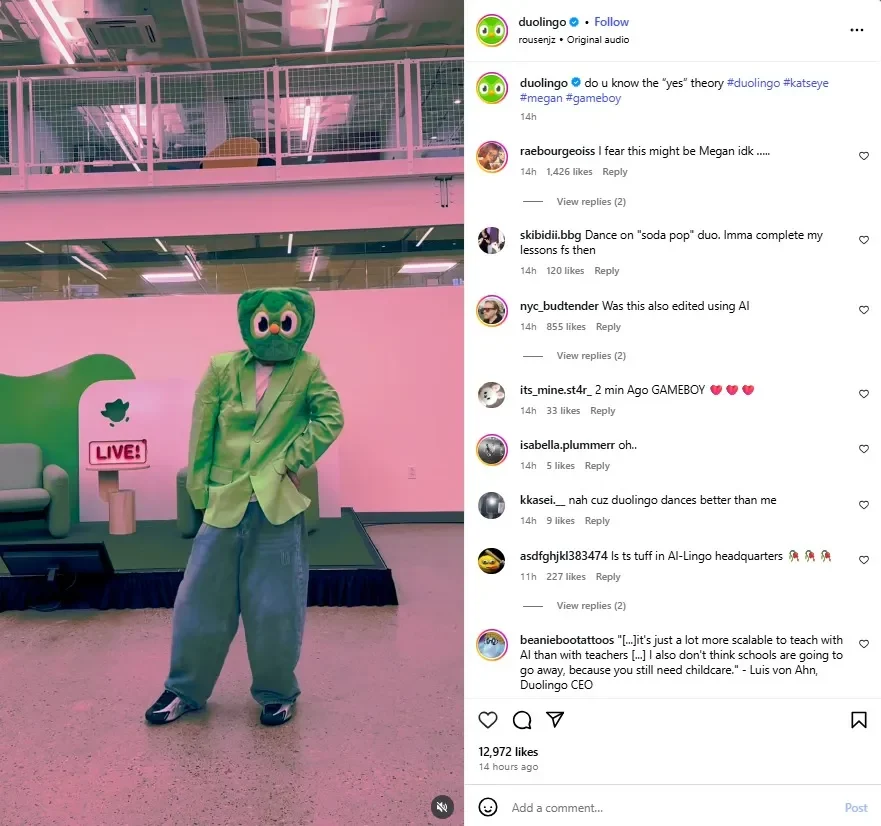
Now that you know what smart brands actually track on Instagram, it’s time to roll up your sleeves. Let’s walk through a clear, repeatable framework to analyze your competitors the right way.
4-Stage Framework to Analyze Your Competitors
Here’s the deal: scrolling through competitor profiles randomly won’t get you far. To uncover what’s really working for them and how you can use it to grow, you need a repeatable, structured analysis system. Let’s break it into four actionable stages:

Stage 1: Discovery
Find the right players in your lane—not just the obvious ones.
Discovery is where you build your competitive radar. It’s not about tracking your rivals alone—it’s about tracking the accounts your audience listens to, trusts, or follows regularly.
Why Does This Stage Matter?
If you analyze the wrong players, your insights will be off. That means wasting time benchmarking against accounts that don’t influence your audience or content space.
How to Do It?
- Search smarter: Use Instagram’s ‘Suggested For You’ and explore tab to find adjacent creators, niche pages, or brand lookalikes.
- Audit your followers: Who else do they follow? Look for overlaps.
- Use tools like:
- Modash or HypeAuditor for influencer discovery
- SocialPilot for analyzing your own connected accounts
- SparkToro to uncover shared audience interests
- Manual vetting tip: Avoid spammy, engagement-podded accounts. Check content quality, tone, and real audience interactions.
Before analyzing competitors, learn how to audit your own Instagram account to benchmark from the inside out.
Stage 2: Extraction
Time to get the right data out without violating any platform rules.
This is the collection phase. You’re not just counting likes—you’re logging post types, captions, frequency, themes, and engagement quality.
Why Does This Stage Matter?
Gut feelings don’t scale. If you want to turn insights into action, you need a structured dashboard that captures meaningful signals consistently.
How to Do It?
- Build a tracker: Use Notion, Google Sheets, or tools like Socialinsider or Metricool to log key metrics across competitors.
- Track this (manually or semi-auto):
- Posting frequency
- Caption length/style
- Formats used (carousel, reels, static)
- Hashtag presence
- Follower interactions
- AI help: Use ChatGPT or Claude to analyze caption tone, post categories, or sentiment patterns.
If you need a creative nudge, we’ve curated high-performing ChatGPT prompts for social media that help you write sharper captions, analyze tone faster, and generate content ideas based on what’s actually working.
Stage 3: Pattern Recognition
Find the signals behind the spikes.
Now that the data’s in, it’s time to connect the dots. You want to know what’s moving the needle for your competitors consistently.
Why Does This Stage Matter?
One-off viral hits don’t tell the full story. But recurring post patterns, trending formats, or seasonal shifts? Those reveal strategy and not luck.
How to Do It?
- Track content surges: Did carousel posts consistently outperform reels for a specific account in Q1? That’s a signal.
- Map seasonal plays: See a spike in user-generated content during the holiday season? It could be a community-led strategy.
- Watch for growth levers:
- Giveaways tied to product launches
- Collaborations with micro-creators
- Reels repurposed across platforms (hint: check their TikTok too)
Stage 4: Strategic Response
Turn observations into action—this is where growth happens.
This is the fun part. You’re not just tracking to “know more”: you’re tracking to create smarter content, test new angles, and drive real results.
Why Does This Stage Matter?
Without application, insight is just trivia. What sets top-performing brands apart is their speed in applying competitor learnings to their own content engine.
How to Do It?
- Test high-performing formats: If everyone’s leaning into 15-sec Reels with hooks, try your version next week.
Not sure where to start? This list of social media post ideas can help you plug the gaps while riding what’s working.
- Tweak your campaign copy: Reword proven CTAs, change positioning, or borrow layout style.
- Adapt tone & visuals: If competitors are too polished, try a behind-the-scenes vibe.
- Build an experiment log: Track how your “inspired-by” content performs over time.
You’ve got the framework. You know what to track. But doing it all manually? That’s a bottleneck. Let’s talk about how we can solve your problem:
Your Next Moves on Instagram
You’ve seen what others are doing. Now it’s your turn to be the one they watch.
Instagram isn’t slowing down—its trends shift fast, its users scroll faster, and your competitors aren’t waiting around. But here’s the good news: most of them are reacting. You? You’re planning. Tracking. Testing. Outmaneuvering.
Set up your weekly check-ins. Watch for patterns others miss. Rethink what you post before the algorithm tells you it’s stale. And above all: treat competitor insights as creative fuel, not copy-paste templates.
The brands that win aren’t louder. They’re just sharper.
And if you’re done wasting time juggling spreadsheets, tabs, and guesswork, SocialPilot’s pricing plans are built exactly for marketers like you. Whether you’re managing five brands or fifty, we’ll help you stay fast, focused, and one move ahead.
